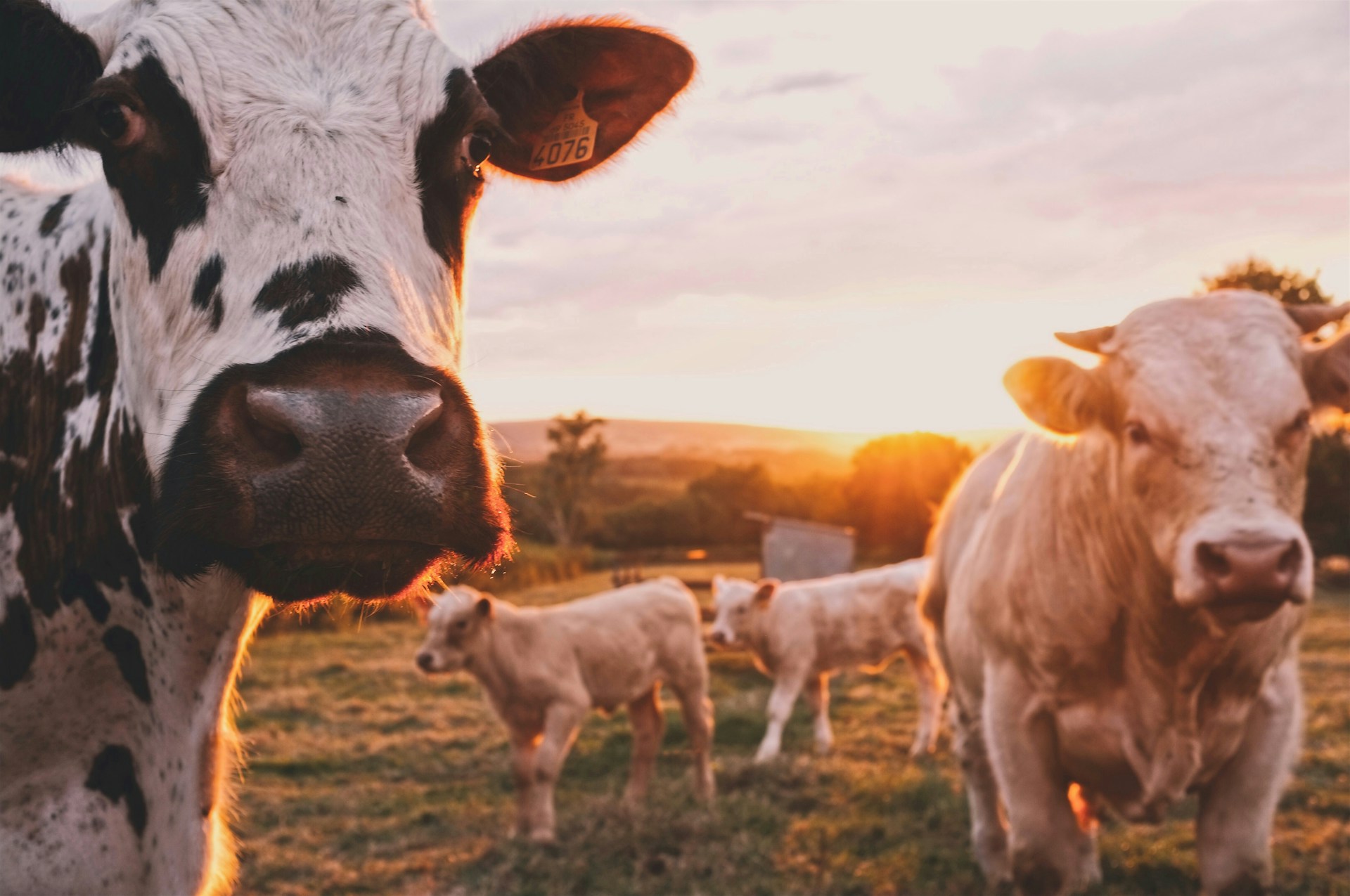Preparedness
Unlock the Secret to 25-Year Survival Food Storage

When it comes to emergency preparedness, having a dependable food supply with a long shelf life is essential. A 25-year shelf life for survival food assures you that the food will remain edible and nutritious for decades, providing sustenance during a crisis.
Achieving such longevity in food storage involves selecting the right food kits and employing effective preservation techniques. It’s crucial to choose high-quality survival food kits that are minimally processed and made with natural ingredients. Look for reputable brands that offer transparent labeling to ensure confidence in your stockpile.
Proper storage is key to maintaining the shelf life of your food. Store your kits in a cool, dark place, ideally between 60-70°F, and use airtight containers like food-grade plastic buckets to protect against moisture and oxygen exposure. Regularly rotate your stock and check for signs of spoilage to maintain safety.
“Freeze-dried meat is considered the ultimate long-term protein source when it comes to survival food.” With a shelf life exceeding 25 years when stored correctly, it surpasses other food types in longevity. Its lightweight nature makes it easy to transport, and rehydrating it is simple when water is available. Freeze-drying retains most nutrients, providing an excellent source of protein, vitamins, and minerals.
Most survival food with a 25-year shelf life utilizes dehydration and freeze-drying methods, reducing moisture exposure. When stored in protective containers, these foods remain edible for decades. Best practices for maximizing shelf life include using oxygen absorber packets and storing food in Mylar bags or food-grade buckets.
For those looking to store food for even longer periods, options like wheat, white rice, dried beans, oats, and pasta are excellent choices, capable of lasting 30 years or more with proper storage. The key is to keep these foods sealed airtight in a cool, dark environment and to avoid temperature fluctuations.
Preserving food with a 25-year shelf life involves careful planning. Mylar bags with oxygen absorbers are effective for blocking light and removing oxygen, preventing oxidation and bacterial growth. Regularly inspect stored food for spoilage and rotate stock using the first-in, first-out method to ensure freshness.
When selecting emergency food kits, prioritize taste, nutrition, and ingredient quality. Look for meals that retain flavor and texture through preservation methods like freeze-drying. Variety is important to avoid taste fatigue, and ease of preparation is crucial, especially in off-grid scenarios.
Nutritional content is paramount, with a focus on protein, vitamin C, and essential minerals. Ensure the food meets caloric needs, as the average adult requires 1500-2000 calories in survival situations. Favor brands with recognizable ingredients and minimal preservatives.
Cost-effectiveness is also important. Calculate the cost per full day’s worth of food or per calorie to determine value. Bulk purchases and online deals can help build your supply economically. With proper planning and storage, you can ensure a reliable food supply for emergencies without overspending.
Proper storage containers, such as opaque plastic buckets with gasket seals or Mylar bags, are essential for long-term food storage. A cool, dark, and dry environment is ideal, with basements or climate-controlled rooms being excellent options. Organize your stock using the first-in, first-out method to maintain freshness.
In addition to food, ensure you have access to cooking equipment and fuel for meal preparation during emergencies. Proper protocols for long-term storage and preparation will keep your food supply intact and safe for consumption.
For freeze-dried and dehydrated items, follow best practices to maintain quality. Seal items in Mylar bags with oxygen absorbers and store in cool, dark spaces. Rehydrate foods correctly to preserve nutrition and taste. By adhering to these guidelines, your emergency food will remain viable for decades.
Building an emergency food supply requires careful planning and budgeting. Bulk purchases and price tracking services can help you stock up economically. With diligent research and proper storage, you can ensure your family has access to nutritious food with a 25-year shelf life when disaster strikes.
Having a reliable stock of long-lasting emergency food is a crucial part of preparedness. By following best practices for selection, storage, and budgeting, you can keep your family nourished during extended emergencies.
Let us know what you think, please share your thoughts in the comments below.

Preparedness
Discover Nature’s Secret Weapons for Wound Healing

Modern medicine has undeniably transformed healthcare, offering life-saving treatments and improved quality of life. However, nature also provides an array of resources that can aid in maintaining and restoring health, especially when it comes to wound healing. Here, we explore five natural remedies that can effectively assist in wound care, alongside five methods that should be approached with caution.
While antibiotics are crucial in combating bacterial infections, their overuse can lead to antibiotic resistance. This is a significant concern, with the Centers for Disease Control and Prevention (CDC) highlighting it as “one of the world’s most pressing public health problems.” For those seeking alternatives, peppermint essential oil shows promise. A 2019 study revealed that peppermint essential oil, when used correctly, “ha[d] the potential for applications in antibiotic-free bacterial infection treatment as wound healing materials.”
Aloe vera, often referred to as America’s favorite succulent, is renowned for its ability to protect and heal the skin. A comprehensive review of 23 studies in 2019 confirmed Aloe vera’s efficacy in treating various wounds, including burns and chronic wounds like pressure ulcers. However, it’s important to note that Aloe vera should not be used on severe wounds or deep cuts.
Onions have been used in traditional remedies for centuries, dating back to the Roman Empire. Modern research supports the use of onion extract in wound care, as it can “accelerate acute wound repair” and minimize scarring, particularly hypertrophic and keloid scars. These scars are characterized by reddish nodules at the wound site.
Garlic, another ancient remedy, boasts a history of medicinal use dating back to 1,500 BC. It was even found in Tutankhamen’s tomb. Garlic’s wound-healing properties are largely attributed to “allicin,” a molecule with antioxidant and anti-inflammatory effects. Studies indicate that garlic ointment can stimulate fibroblasts, which play a crucial role in organizing and accelerating wound repair.
Turmeric, celebrated for its medicinal compounds known as “curcuminoids,” offers powerful anti-inflammatory and antioxidant benefits. Research has demonstrated that curcumin possesses “significant wound healing properties,” acting on various stages of the healing process. However, while topical application is beneficial, orally ingesting turmeric for wound healing is not recommended due to potential side effects, such as uterine bleeding or contractions in pregnant women.
While these natural remedies offer promising benefits, some traditional methods should be avoided. St. John’s wort, although useful in some medical applications, can dangerously interact with several medications. In some countries, its use is restricted or banned without a prescription.
Egg whites, sometimes used as a home remedy for burns, pose a risk due to their high bacterial content, including salmonella. This makes them unsuitable for application on wounds.
Similarly, using saliva to clean wounds is ill-advised. As holistic physician Svetlana Kogan, MD, notes, “Our breath and saliva have tons of bacteria which can contaminate [a] wound and lead to an infection.” Instead, wounds should be cleaned with water and properly sanitized.
Human breast milk, while shown to aid wound healing due to its bioactive components, can also transmit diseases if not handled correctly. Dr. Sarah Yamaguchi warns that “breast milk can transmit infectious diseases such as HIV,” and improper storage can introduce bacteria.
In conclusion, nature offers a wealth of effective wound-healing options. However, it’s essential to conduct thorough research and consult healthcare professionals before trying any natural remedy.
Let us know what you think, please share your thoughts in the comments below.
Preparedness
Is Your Mindset Sabotaging Your Survival Instincts?

In today’s rapidly evolving world, the skills and instincts that once enabled our ancestors to thrive have largely disappeared. Modern society has become so detached from the natural world that many individuals would struggle to survive in an environment similar to that of just a century ago. Most people today rely heavily on the artificial environments we’ve created, and without them, survival becomes a daunting challenge.
“Survival situations are not limited to the wilderness. The end of the world as you know it, can arrive at home, on your way to work, at school or in the grocery store. We are now at a place we have never been before in society. Our world is rapidly changing, as are the threats we must face.” This observation highlights the unpredictable nature of potential disasters, which can strike anywhere and at any time.
Regardless of the nature of a crisis—be it an economic collapse, an electromagnetic pulse, or another war—our basic survival needs remain unchanged. We must be prepared to meet these needs, as they are crucial to our survival in any life-altering event. While we may have little control over global events, we can focus on what is within our power. This includes making sound personal decisions, improving our fitness, and learning skills that could help us thrive when the unexpected occurs.
In the aftermath of a natural disaster, survivors often fall into two categories: those who prepared in advance and those who did not. The latter group often operates under the assumption that nothing bad will happen, despite numerous warnings. This mindset, known as normalcy bias, is a dangerous form of denial.
“Normalcy bias is a psychological state of denial people enter in the event of a disaster, as a result of which they underestimate the possibility of the disaster actually happening, and its effects on their life and property. Their denial is based on the assumption that if the disaster has not occurred until now, it will never occur.” This bias leads to a lack of preparedness, leaving individuals vulnerable when disaster strikes.
The danger of normalcy bias lies in its ability to leave people unprepared and reliant on others who have taken precautions. When denial gives way to reality, desperation sets in, often leading to chaos and unnecessary suffering.
Normalcy bias can manifest in various disaster scenarios, from minor accidents to major global events. It is thought to arise from the brain’s processing of new information under stress, leading to fixation on a single, often inadequate, solution. This can result in serious injury or death due to a lack of preparation, such as inadequate shelter, supplies, or evacuation plans.
To combat normalcy bias, it’s essential to engage in the four stages of disaster response: mitigation, preparedness, response, and recovery. The mitigation phase involves taking steps to protect people and property before a disaster occurs, such as maintaining your home and vehicle or securing insurance.
Preparedness involves planning for potential disasters, including community education and stocking essential supplies. The response phase focuses on addressing immediate threats in the aftermath of a disaster, made easier by prior planning. Finally, the recovery phase involves restoring stability in the disaster’s wake, which can take months or even years.
“Every person who prepares is one less person who panics in a crisis.” This sentiment emphasizes the importance of readiness, not just for personal survival but for the overall resilience of communities. By understanding and addressing normalcy bias, we can better protect ourselves and others when disaster strikes.
Let us know what you think, please share your thoughts in the comments below.
Preparedness
Essential First-Aid Kit Must-Haves for Your Livestock

For those dedicated to homesteading or simply caring for beloved pets, safeguarding the well-being of your animals is paramount. In survival scenarios, animals are just as susceptible to injuries as humans. It’s not a question of “if” but “when” they might get hurt. Therefore, incorporating a comprehensive first-aid kit for your livestock or domestic animals is crucial.
To ensure you’re fully prepared, here’s a checklist of essential items that should be part of your animal first-aid arsenal. If these items aren’t in your kit yet, don’t fret—it’s never too late to start.
Maintaining cleanliness is vital, especially when administering first aid. Saline solution is an excellent choice for cleaning your hands before and after tending to wounds. Additionally, it effectively clears the wound area, allowing you to assess the situation more clearly.
Following saline solution, an antibacterial solution is a must-have. Use it to clean wounds and prevent infections caused by bacteria. It also serves to sanitize your hands or any tools that come into contact with the animal’s injury.
It might seem like common sense, but don’t overlook the importance of gauze. Gauze and bandages are essential for covering open wounds, cuts, scrapes, or burns.
Once the wound is cleaned, it should be covered to prevent further bleeding and keep out dirt and germs. Ensure you have enough gauze and bandages for several days, as they require frequent changing. Stock up according to the number and size of your animals, and always add a bit more than you think you’ll need.
Spray dressing is another convenient addition to your first-aid kit. Animals are notorious for not sitting still, making it challenging to apply contact dressings.
Spray dressing offers a no-contact solution for treating minor scrapes and cuts in hard-to-reach areas or when an animal refuses to stay put. It also has antibacterial properties and aids in scabbing.
Animals have a knack for eating things they shouldn’t, which can sometimes lead to serious harm. In such cases, activated charcoal can be a lifesaver.
Available in pet-specific tablets, activated charcoal acts as a sponge for toxins ingested by your animal. If administered correctly, it can neutralize many poisonous substances. Even if your animal shows improvement, it’s crucial to contact a vet immediately.
Injured animals experience pain similarly to humans, which can make them difficult to manage. Animals react differently to pain, often becoming skittish and potentially aggressive.
Having a spare leash, muzzle, or other restraint can be invaluable for keeping an animal still while you administer treatment. Although restraining an animal is not ideal, it may be necessary to prevent them from exacerbating their injury.
Lastly, a pair of tweezers is an essential tool in your livestock first-aid kit. Tweezers are perfect for removing splinters, particularly since animals don’t wear shoes and are more prone to stepping on sharp objects.
A good pair of tweezers allows you to extract foreign objects from paws more efficiently than using your fingers, while also maintaining hand hygiene.
When planning for emergencies, always consider your animals’ needs alongside your own. You can purchase pre-made kits online or gather individual items for a custom kit.
Either way, ensure you are prepared for those who can’t prepare for themselves.
Let us know what you think, please share your thoughts in the comments below.
-

 Tactical1 year ago
Tactical1 year ago70-Year-Old Fends Off Intruder with Lead-Powered Message
-

 Tactical1 year ago
Tactical1 year agoVape Shop Employee Confronts Armed Crooks, Sends Them Running
-

 Preparedness9 months ago
Preparedness9 months agoEx-Ballerina’s Guilty Verdict Sends Tremors Through Gun-Owner Community
-

 Preparedness7 months ago
Preparedness7 months agoGood Samaritan Saves Trooper in Harrowing Interstate Confrontation
-

 Tactical1 year ago
Tactical1 year agoMidnight SUV Theft Interrupted by Armed Homeowner’s Retaliation
-

 Survival Stories2 years ago
Survival Stories2 years agoEmily’s 30-Day Experience of Being Stranded on a Desert Island
-

 Preparedness8 months ago
Preparedness8 months agoArizona Engineer’s Headless Body Found in Desert: Friend Charged
-

 Preparedness8 months ago
Preparedness8 months agoBoy Saves Dad from Bear Attack with One Perfect Shot